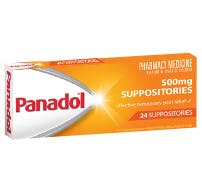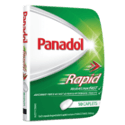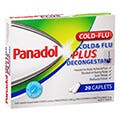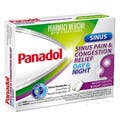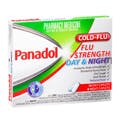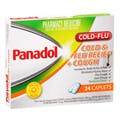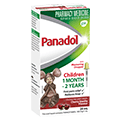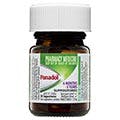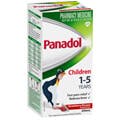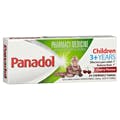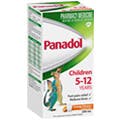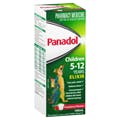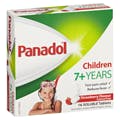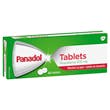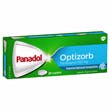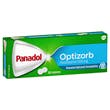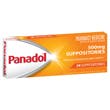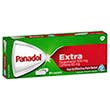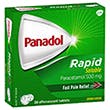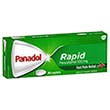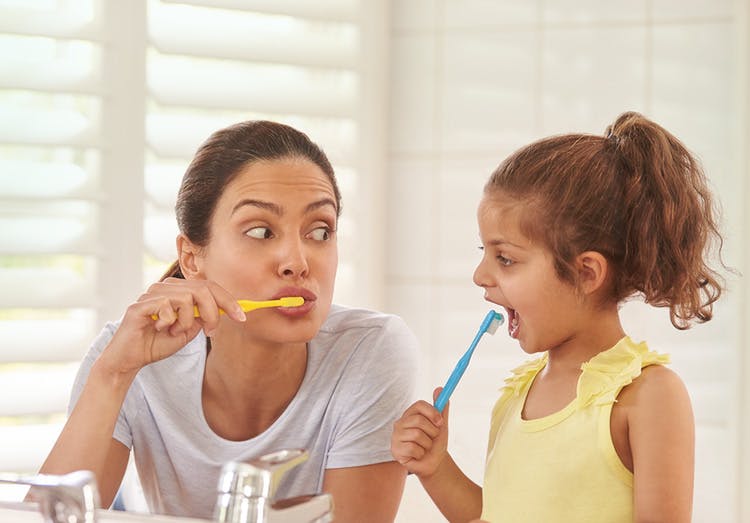

Colourfree Baby Drops 1-2 Months

Colourfree Suspension 1-5 Years

Chewable Tablets 3+

Suppositories 6 Months - 5 Years

Colourfree Suspension 5-12 Years

Elixir 5 - 12 Years

Suppositories 5-12 Years

Soluble 7+

Panadol Tablets

Panadol Caplets with Optizorb Formulation

Panadol Tablets with Optizorb Formulation

Panadol Gel Caps

Panadol Mini Caps

Panadol Suppositories

Panadol Back & Neck

Panadol Extra Caplets

Panadol Rapid Soluble

Panadol Rapid Caplets

Panado Rapid Handipak

Panadol Back & Neck Long Lasting

Panadol Osteo

Panadol Cold & Flu + Decongestant

Panadol Cold & Flu - Flu Strength (Day & Night)

Panadol Cold & Flu Relief + Cough

Panadol Cold & Flu MAX Hot Lemon
Compare Now (0/5)
- Product
- Format
- Age
- Key Features
- Ingredients

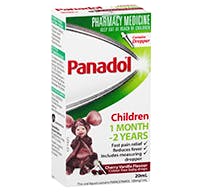
Colourfree Baby Drops 1-2 Months
- Concentrated Drops
- 1 Month - 2 Years
- Gentle on Tiny Tummies
- 500mg Paracetamol
- No gluten, lactose or sugar

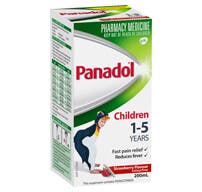
Colourfree Suspension 1-5 Years
- Suspension
- 1-5 Years
- Strawberry/Orange Flavour
- Active Ingredient: Paracetamol 24 mg/mL

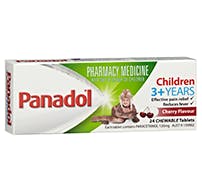
Chewable Tablets 3+
- Dissolvable Tablets
- 1-5 Years
- Perfect For Travel
- Active Ingredient: 120mg of Paracetamol per tablet

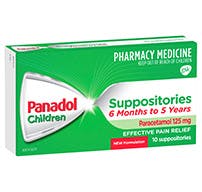
Suppositories 6 Months - 5 Years
- Suppositories
- 6 Months - 5 Years
- For vomiting
- Active ingredient: Paracetamol 125mg per suppository.

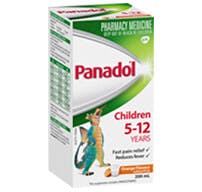
Colourfree Suspension 5-12 Years
- Suspension
- 5-12 Years
- Strawberry/Orange Flavour
- Active ingredient: Paracetamol 48 mg/mL


Elixir 5 - 12 Years
- Suspension
- 5-12 Years
- Fast & gentle relief
- Active ingredient: Paracetamol 48 mg/mL


Suppositories 5-12 Years
- Suppositories
- 5-12 Years
- For vomiting
- Active ingredient: 250mg Paracetamol per suppository

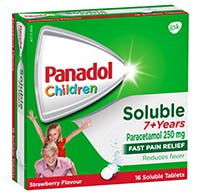
Soluble 7+
- Effervescent Tablets
- 7+ Years
- Absorbed quicker
- Active ingredient: Paracetamol

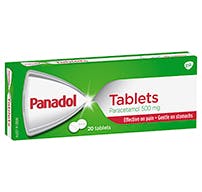
Panadol Tablets
- Tablets
- 12+ Years
- Basic Pain
- Active ingredient: 500mg Paracetamol

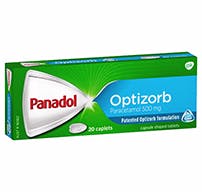
Panadol Caplets with Optizorb Formulation
- Caplets
- 12+ Years
- Quicker Absorbtion
- Active ingredient: 500mg Paracetamol

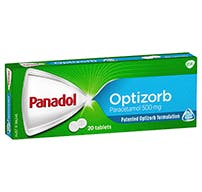
Panadol Tablets with Optizorb Formulation
- Tablets
- 12+ Years
- Quicker Absorbtion
- Active ingredient: 500mg Paracetamol

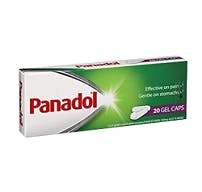
Panadol Gel Caps
- Caplets
- 12+ Years
- Easier to swallow
- Active ingredient: 500mg Paracetamol

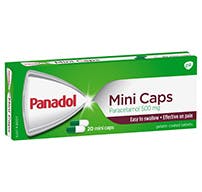
Panadol Mini Caps
- Caplets
- 12+ Years
- Easier to swallow
- Active ingredient: 500mg Paracetamol


Panadol Suppositories
- Suppositories
- 12+ Years
- For vomiting
- Active ingredient: 500mg Paracetamol per suppository.

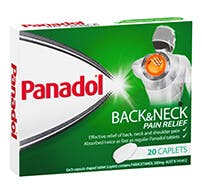
Panadol Back & Neck
- Caplets
- 12+ Years
- Fights Back Pain
- Active ingredient: 500mg Paracetamol

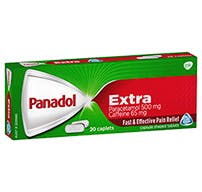
Panadol Extra Caplets
- Caplets
- 12+ Years
- Fight Tough Pai
- Active ingredient: 500mg Paracetamol , 65mg caffeine

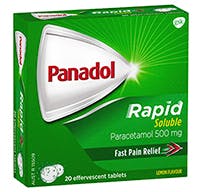
Panadol Rapid Soluble
- Dissolvable Tablets
- 12+ Years
- Absorbed 2x Faster
- Active ingredient: 500mg Paracetamol

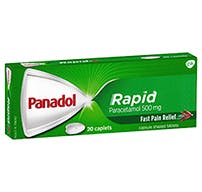
Panadol Rapid Caplets
- Caplets
- 12+ Years
- Absorbed 2x Faster
- Active ingredient: Paracetamol

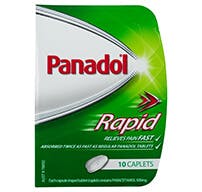
Panado Rapid Handipak
- Caplets
- 12+ Years
- Absorbed 2x Faster
- Active ingredient: 500mg Paracetamol

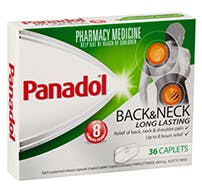
Panadol Back & Neck Long Lasting
- Caplets
- 12+ Years
- Up to 8 hours
- Active ingredient: 655mg Paracetamol

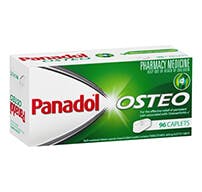
Panadol Osteo
- Tablets
- 12+ Years
- Up to 8 hours
- Active ingredient: 665mg Paracetamol

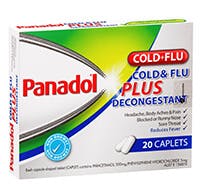
Panadol Cold & Flu + Decongestant
- Caplets
- 12+ Years
- With Decongestant
- 500mg Paracetamol

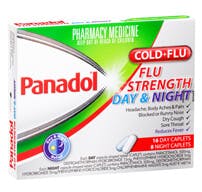
Panadol Cold & Flu - Flu Strength (Day & Night)
- Caplets
- 12+ Years
- Day & Night Relief
- 500mg Paracetamol

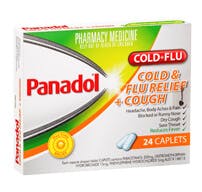
Panadol Cold & Flu Relief + Cough
- Caplets
- 12+ Years
- Cough Relief
- 500mg Paracetamol
Minimise
Vomiting And Diarrhea in Children
Vomiting and diarrhoea cause your child to lose a lot of fluid. This can be very dangerous, especially in hot weather or if they have a fever. These illnesses may or may not be caused by an infection.

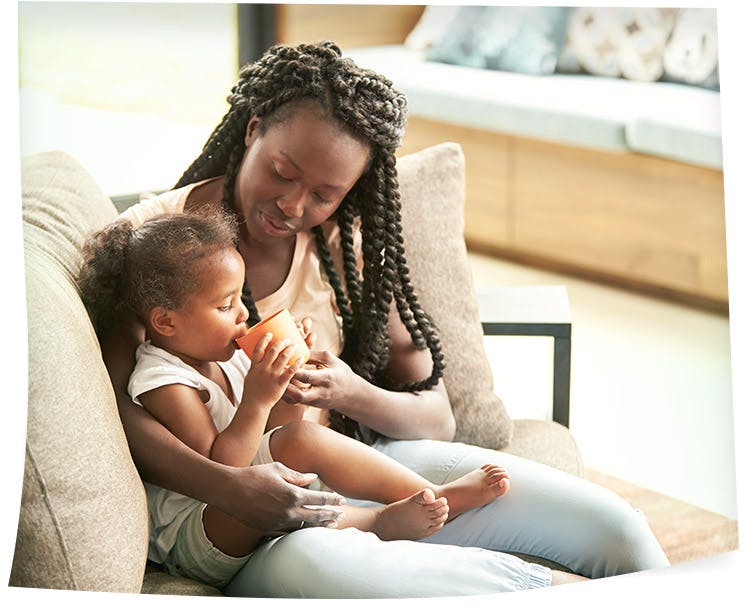
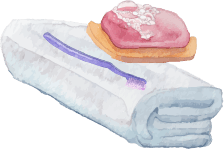
Vomiting and diarrhoea cause your child to lose a lot of fluid. This can be very dangerous, especially in hot weather or if they have a fever. These illnesses may or may not be caused by an infection.
About diarrhoea
This is when their bowel actions become much more watery and more frequent than usual. There may be mucus or blood in the bowel actions and they may be very smelly.
About vomiting in babies
Almost all babies bring up a bit of milk (and some a lot of milk) without distress. This is normal. But if your baby is suddenly vomiting a lot more, or it occurs frequently over an hour or two, it could be serious. The vomiting may accompany other signs of illness, like fever or diarrhoea.
Vomiting and diarrhea in babies under 6 months
- Don’t try to manage it yourself – contact your doctor straight away.
- Continue to breastfeed (small, frequent feeds are recommended).
- If bottle feeding, stop giving formula. Instead, offer oral rehydration fluids (see next page) or 50 mL of boiled water, cooled to room temperature, every hour until you can see your doctor.

.png?auto=format)
Vomiting and diarrhea in babies over 6 months
- Continue to breastfeed. You may also offer 50–100 mL of clear fluids in between breastfeeds.
- If bottle feeding, stop giving formula for 12–24 hours. Give clear fluids instead (see next page). When vomiting and diarrhoea settles, or after 24 hours, recommence usual formula.
- If your baby is on solids, stop for 24 hours, then slowly re-introduce them, starting with rice, pasta, potato, toast or bread, or baby rice cereal. The aim is to return to a normal diet within 2–3 days of the illness settling.
- Don’t give medicine unless your doctor says so.
- Clear fluids for children and babies over 6 months.
- Oral rehydration solution (electrolyte solution) which you can get at your pharmacy – either as a ready-made liquid form, or as sachets of powder that you mix with water. This helps replace important minerals lost, like sugar and salts. Always carefully follow the directions on the packet or bottle.
- If oral rehydration fluid is not available, fluids such as clear (without pulp), diluted, unsweetened fruit juice or cordial may be used with caution:
- Mix 20ml unsweetened clear fruit juice with 80ml of tap water.
- Mix 5ml of cordial (not low cal or sugar-free) with 100ml of tap water.
- Mix 20ml of fizzy drink (not low cal or sugar-free) with 80ml of tap water.
How to prevent the spread of infection
- Keep the sick child away from other children.
- Wash your child’s hands after they go to the toilet and before they eat any meals.
- Wash your hands after attending to the sick child, after changing nappies and before preparing food and bottles.
- Wash the sick child’s clothes and nappies separately from the rest of the family’s clothing to prevent cross infection.
When to see your doctor
- If your baby is less than 6 months old and has vomiting and diarrhoea.
- If your baby is less than 3 months old and has a fever of 38°C or above.
- If your child can’t stop vomiting and can’t keep the right amount of fluid down.
- If there is any bile stained (greenish) vomit, or signs of blood in the vomit.
- If there is blood or mucus in their bowel motions.
- If your child has ongoing tummy pain or high fevers.
- If your child becomes sleepier than normal, or is hard to wake up, or is limp.
- If your child is having less than half their normal fluid intake.
- If your child has sunken eyes.
- If your child’s mouth or tongue feels dry.
- If your child goes 4–6 hours or more without a wet nappy.
- If your child is very irritable and unable to be consoled.
- If your child has other health problems or does not seem to be getting any better.








